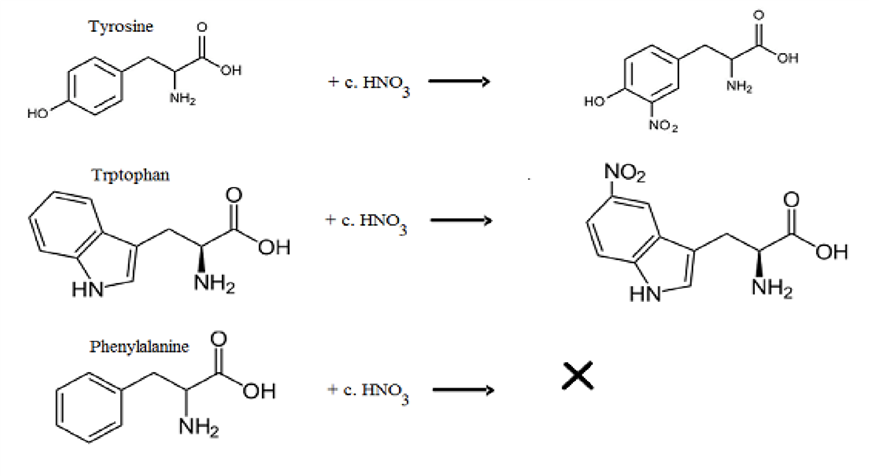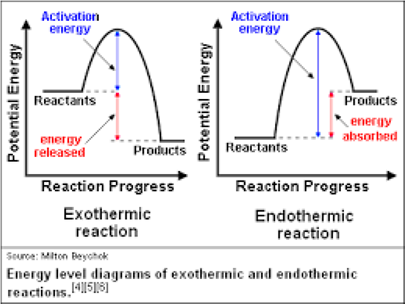What is Xanthoproteic Test Procedure?
|
|
||||||||||
|
Experiment # 3 |
||||||||||
|
|
||||||||||
|
|
XANTHOPROTEIC TEST |
|
||||||||
|
Xanthoproteic test is a biochemical test for the detection of amino acids containing phenolic or indolic groups like phenylalanine, tyrosine, and tryptophan (aromatic amino acids). The test is named Xanthoproteic test due to the formation of a yellow precipitate of xanthoproteic acid. The term ‘Xantho’ refers to ‘yellow’, so the test is often termed as the Yellow Protein Test. The test gives a positive result for amino acids containing benzene rings or other aromatic groups. The test is a qualitative test that provides information only on the presence or absence of the amino acids. |
||||||||||
|
|
Principle |
|||||||||
|
❖ The Xanthoproteic test is based on the fact that aromatic groups in the amino acids are nitrated by heating with concentrated HNO3 to yield intensely yellow-colored nitro derivative. On the addition of alkali, however, the residue turns orange due to the formation of a salt of the tautomeric form of the nitro compound. Benzene ring-containing amino acids like phenylalanine don’t give a positive test to this test because the phenyl group in phenylalanine is very stable, which doesn’t react with nitric acid in the conditions of this test. However, phenylalanine might give a positive result after an extended period of heating.
|
||||||||||
|
|
Requirements for Xanthoproteic test: |
|||||||||
|
▪ test solution: 1 % tyrosine, 1 % tryptophan, 1 % phenylalanine, 5 % egg white (albumin) ▪ Nitric acid ▪ 40 % NaOH ▪ Dry test tubes |
||||||||||
|
▪ Pipettes
PROCEDURE µ Take 1ml test solution in dry test tube. µ Similarly, take 1ml distilled water in another test tube as control. µ Add 1ml of conc. HNO3 in all test tubes and mix well. µ Cool the solution under tap water. µ Now add 2ml of 40 % NaOH to all test tubes. µ Look for the color development. |
|
||||||||||
|
|
|
RESULTS |
|
|
|||||||
|
|
|
||||||||||
|
|
|
||||||||||
|
|
Observation: |
The appearance of a dark yellow or orange-colored solution represents a positive test. This indicates the presence of aromatic groups in the proteins and amino acids. This is a biochemical test for the detection of proteins and amino acids. The test allows the differentiation of aromatic amino acids from non-aromatic amino acids. Even though phenylalanine is an aromatic group-containing amino acid, it doesn’t give a positive Xanthoproteic test due to the highly stable phenyl group. |
|
||||||||
|
|
|
||||||||||
|
Uses: |
|
|
|||||||||
|
|
|
||||||||||
|
Limitations: |
|
|
|||||||||
|
|
|
||||||||||











Comments
Post a Comment